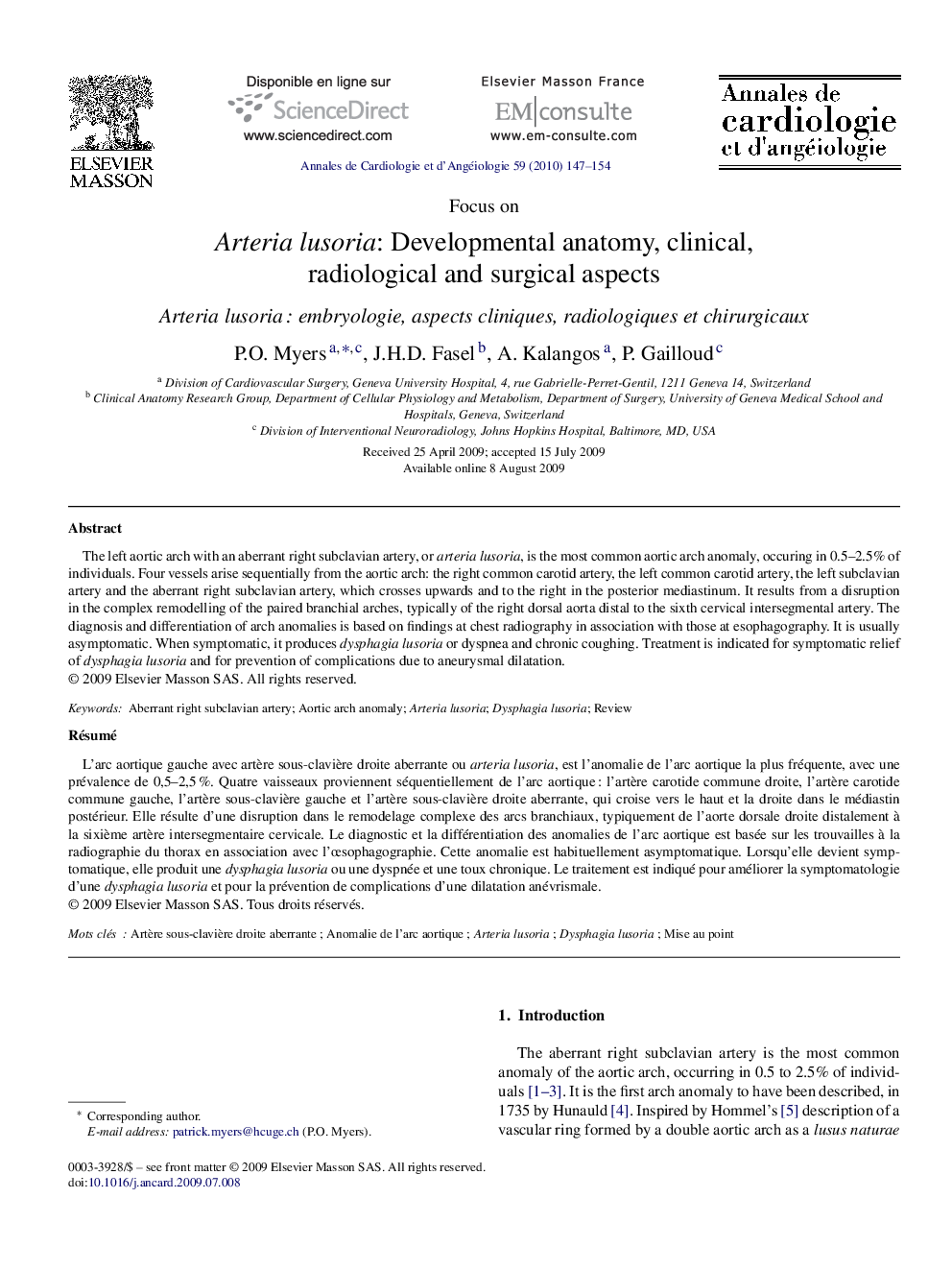| کد مقاله | کد نشریه | سال انتشار | مقاله انگلیسی | نسخه تمام متن |
|---|---|---|---|---|
| 2869327 | 1171237 | 2010 | 8 صفحه PDF | دانلود رایگان |

The left aortic arch with an aberrant right subclavian artery, or arteria lusoria, is the most common aortic arch anomaly, occuring in 0.5–2.5% of individuals. Four vessels arise sequentially from the aortic arch: the right common carotid artery, the left common carotid artery, the left subclavian artery and the aberrant right subclavian artery, which crosses upwards and to the right in the posterior mediastinum. It results from a disruption in the complex remodelling of the paired branchial arches, typically of the right dorsal aorta distal to the sixth cervical intersegmental artery. The diagnosis and differentiation of arch anomalies is based on findings at chest radiography in association with those at esophagography. It is usually asymptomatic. When symptomatic, it produces dysphagia lusoria or dyspnea and chronic coughing. Treatment is indicated for symptomatic relief of dysphagia lusoria and for prevention of complications due to aneurysmal dilatation.
RésuméL’arc aortique gauche avec artère sous-clavière droite aberrante ou arteria lusoria, est l’anomalie de l’arc aortique la plus fréquente, avec une prévalence de 0,5–2,5 %. Quatre vaisseaux proviennent séquentiellement de l’arc aortique : l’artère carotide commune droite, l’artère carotide commune gauche, l’artère sous-clavière gauche et l’artère sous-clavière droite aberrante, qui croise vers le haut et la droite dans le médiastin postérieur. Elle résulte d’une disruption dans le remodelage complexe des arcs branchiaux, typiquement de l’aorte dorsale droite distalement à la sixième artère intersegmentaire cervicale. Le diagnostic et la différentiation des anomalies de l’arc aortique est basée sur les trouvailles à la radiographie du thorax en association avec l’œsophagographie. Cette anomalie est habituellement asymptomatique. Lorsqu’elle devient symptomatique, elle produit une dysphagia lusoria ou une dyspnée et une toux chronique. Le traitement est indiqué pour améliorer la symptomatologie d’une dysphagia lusoria et pour la prévention de complications d’une dilatation anévrismale.
Journal: Annales de Cardiologie et d'Angéiologie - Volume 59, Issue 3, June 2010, Pages 147–154